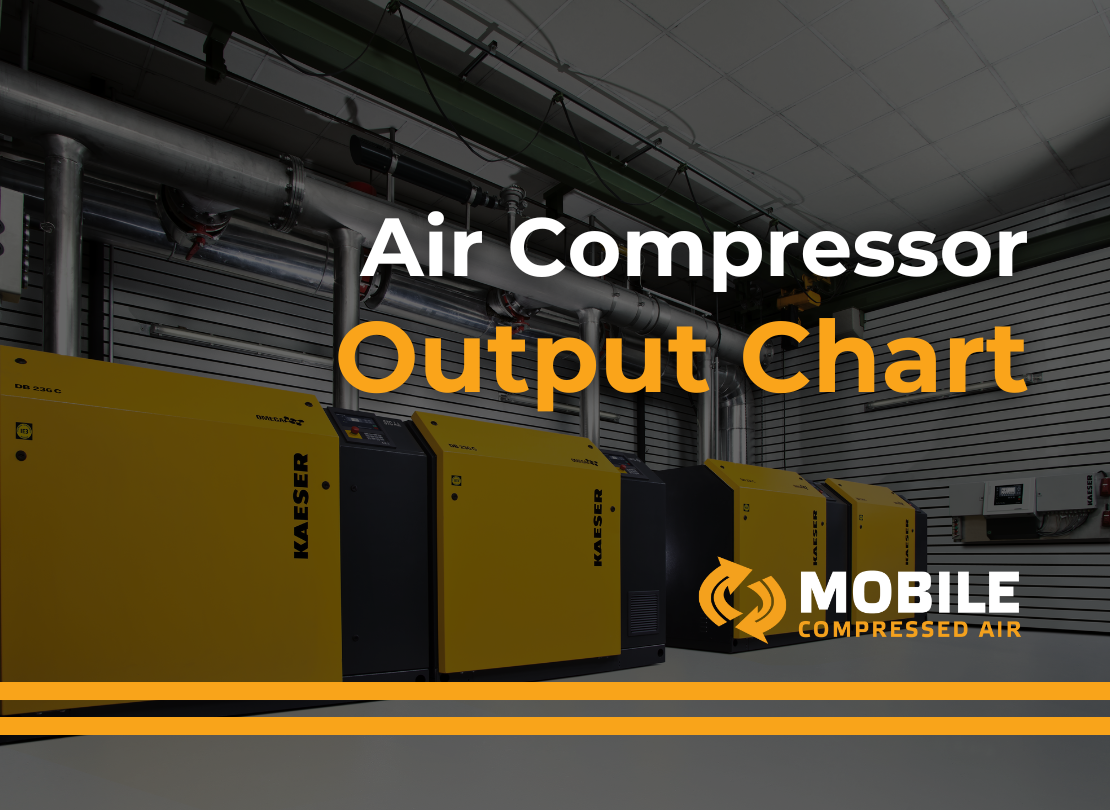
Air Compressor Output Chart: Find the Right Airflow for Your Needs
Choosing the right air compressor for your operation is crucial, and understanding output—measured as flow rate—is key to making an informed decision. Air compressors are used across industries, from automotive and manufacturing to construction, but each application requires a specific output level for optimal performance.
Our four comprehensive output charts simplify this process by displaying airflow at different pressure and power levels. They help you quickly match compressor size to your operational requirements.
What is Flow Rate and Why Does It Matter?
Pressure determines how forcefully air is delivered, typically measured in bar, PSI, or kPa. Smaller pneumatic tools may need lower pressure, while industrial equipment might require higher levels to operate effectively.
Power, measured in kilowatts (kW) or horsepower (HP), determines a compressor’s capacity to produce and sustain airflow at a given pressure. As pressure increases, flow rate often decreases unless power is increased too. Balancing these factors helps maintain consistent performance without overloading the compressor.
The Role of Pressure and Power in Air Compressor Performance
Flow rate, or output, is the volume of air a compressor delivers per minute—measured in CFM (cubic feet per minute), m³/min (cubic metres per minute), or L/min (litres per minute). Different tools and industrial applications need specific flow rates to function efficiently.
A compressor with insufficient flow can cause tools to underperform, while one with excessive flow may be an unnecessary expense. Understanding and selecting the right flow rate ensures your compressor supports your application without compromise.
Output Charts
To make selection simple, we’ve divided the output data into four easy-to-read charts:
- Oil-Lubricated Rotary Screw Compressors – Ideal for general industrial use, offering reliable performance with higher efficiency.
- Oil-Free Rotary Screw Compressors – Designed for applications requiring contaminant-free air, such as food, medical, and electronics industries.
- Oil-Lubricated Reciprocating Compressors – Suitable for workshops and light industrial use where intermittent demand is common.
- Oil-Free Reciprocating Compressors – Best suited for environments where oil-free air is critical but space and power limits apply.
Each chart shows estimated outputs in m³/min, CFM, and L/min across varying pressures (bar/PSI) and power ratings (kW/HP).
For exact figures, refer to your compressor’s technical data sheet, as output can vary depending on design and efficiency.
Download the Charts
You can download all four charts as a reference tool when comparing compressor types. They provide a reliable guide to typical outputs and help you determine which model suits your pressure, flow, and power requirements.
Download the Air Compressor Output Charts here.
